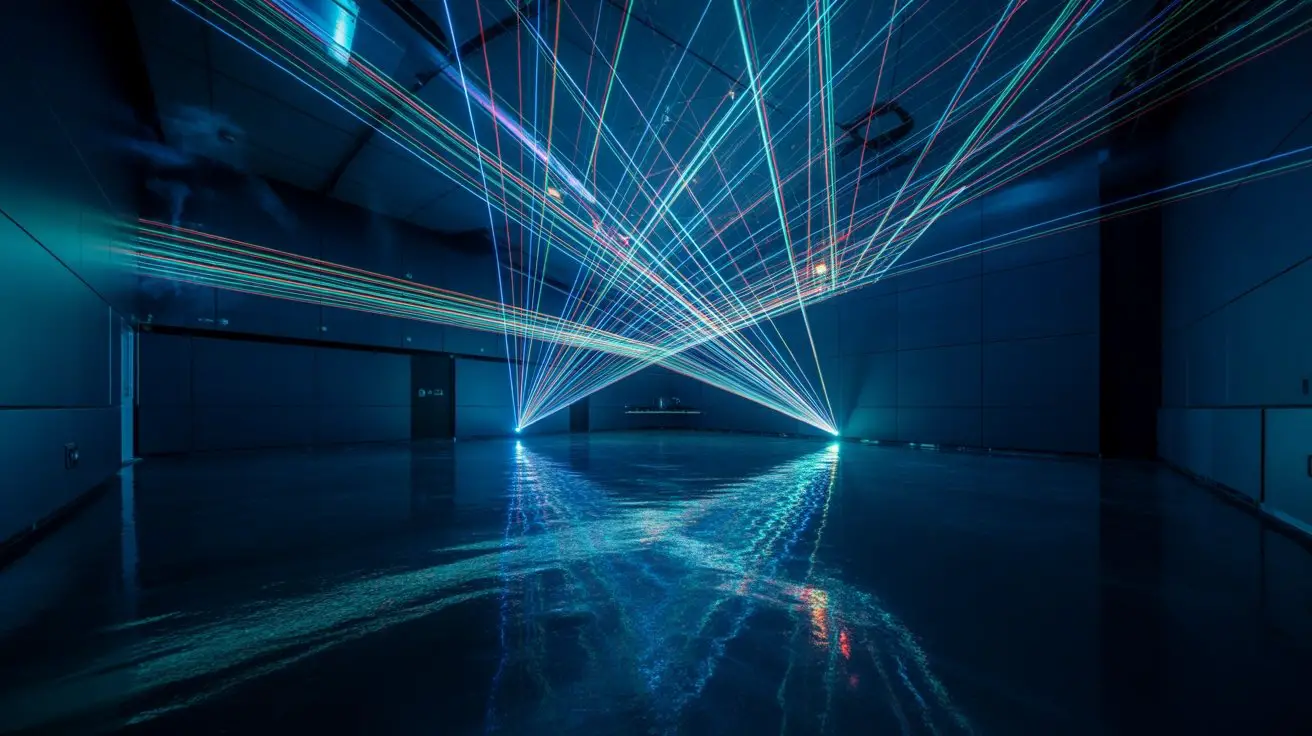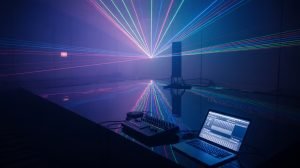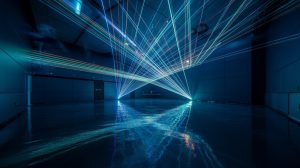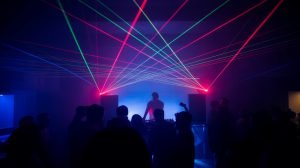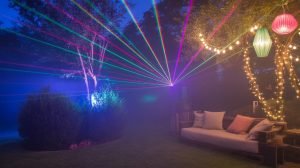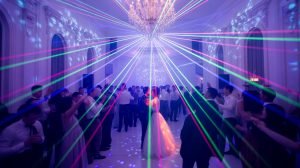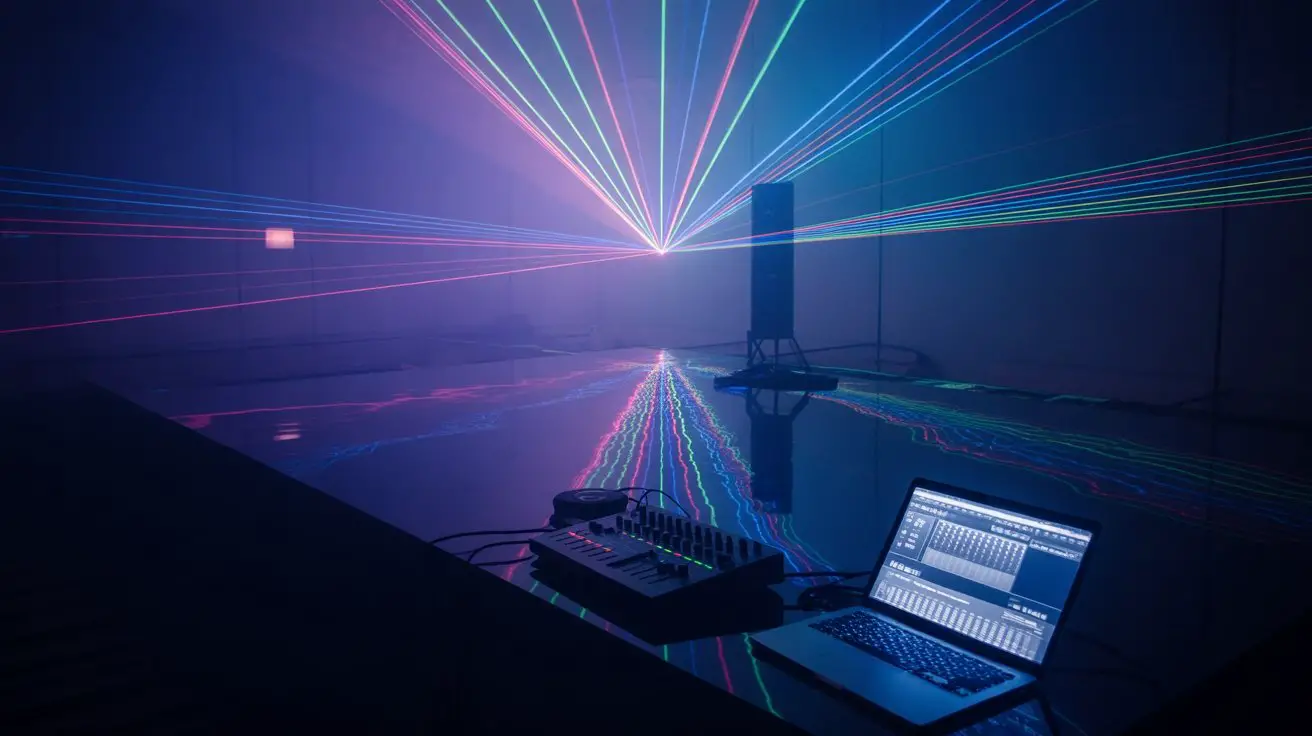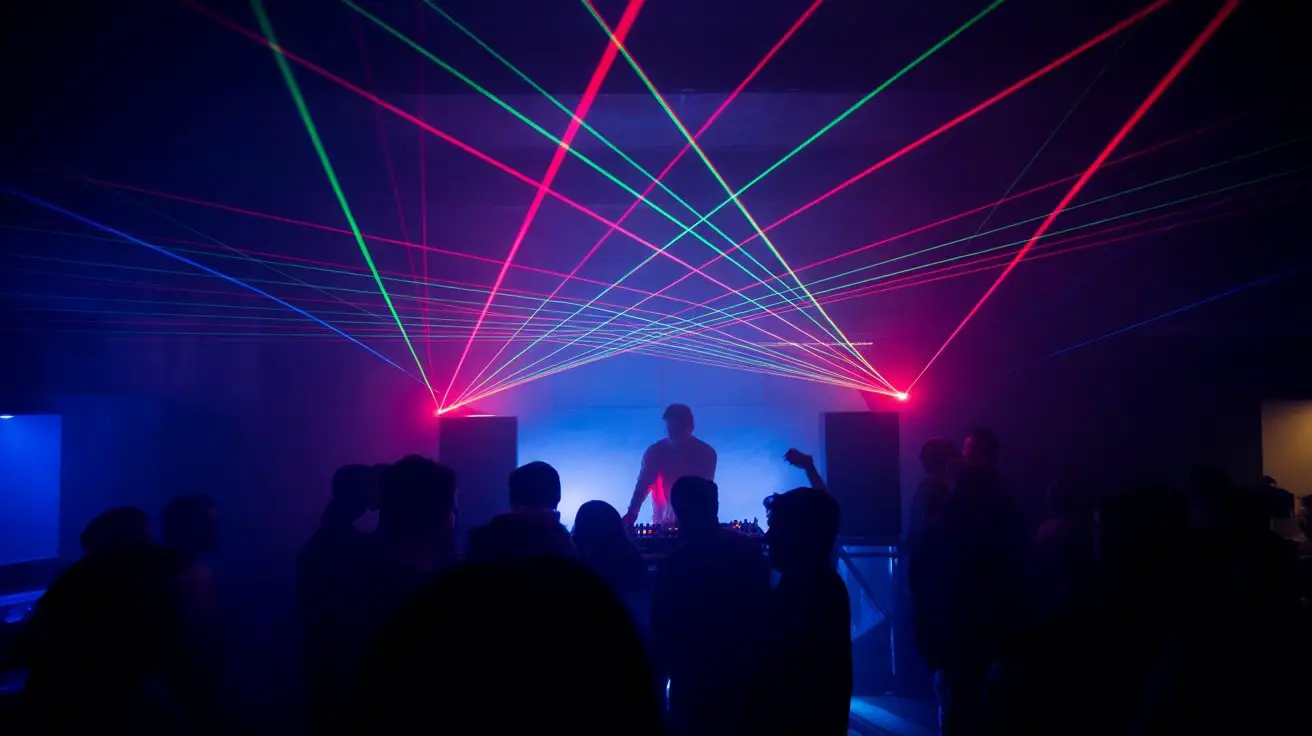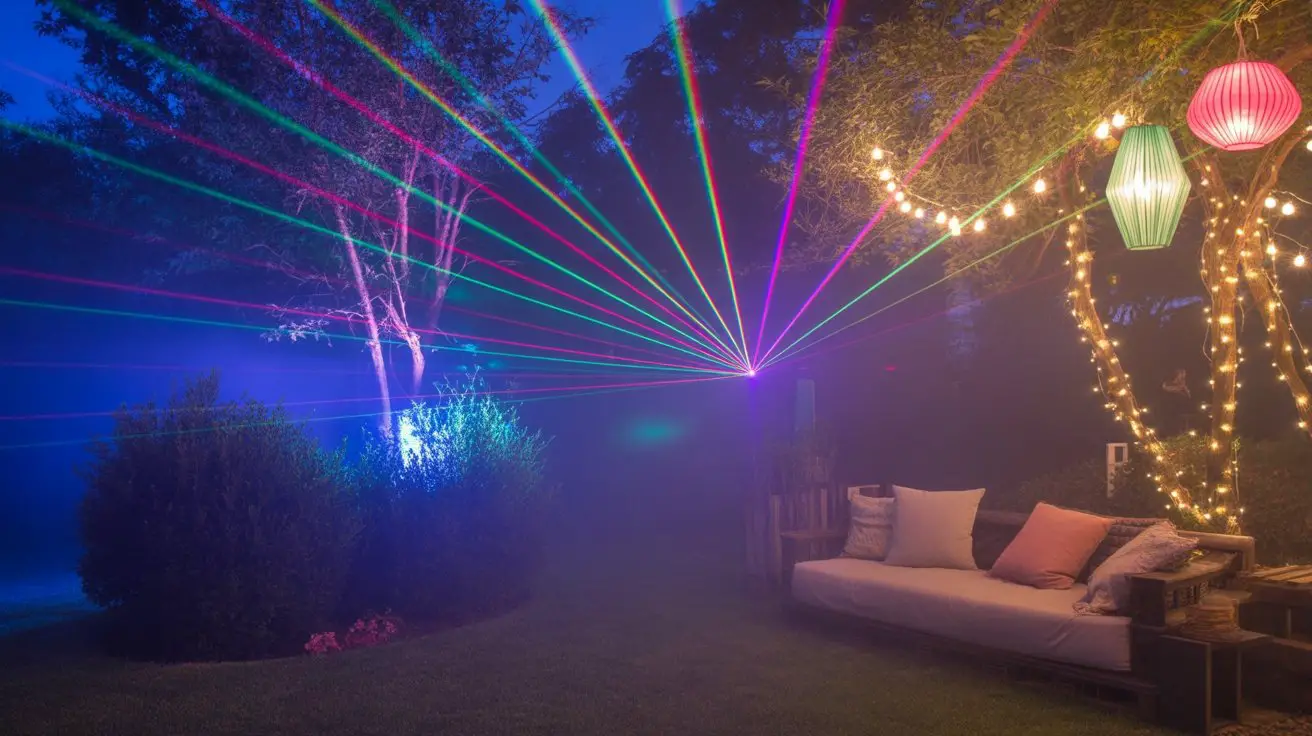Like a magician designing the perfect stage, you’ll need to engineer your laser show space with mathematical precision to achieve stunning visual effects while maintaining strict safety protocols. Your laser’s power output directly determines minimum ceiling heights, wall reflectivity requirements, and audience positioning—but there’s a critical relationship between these variables that most enthusiasts overlook. Understanding this interconnected system will transform your space from a simple room into a calculated performance environment where every dimension serves a specific purpose.
Understanding Room Dimensions and Laser Beam Physics
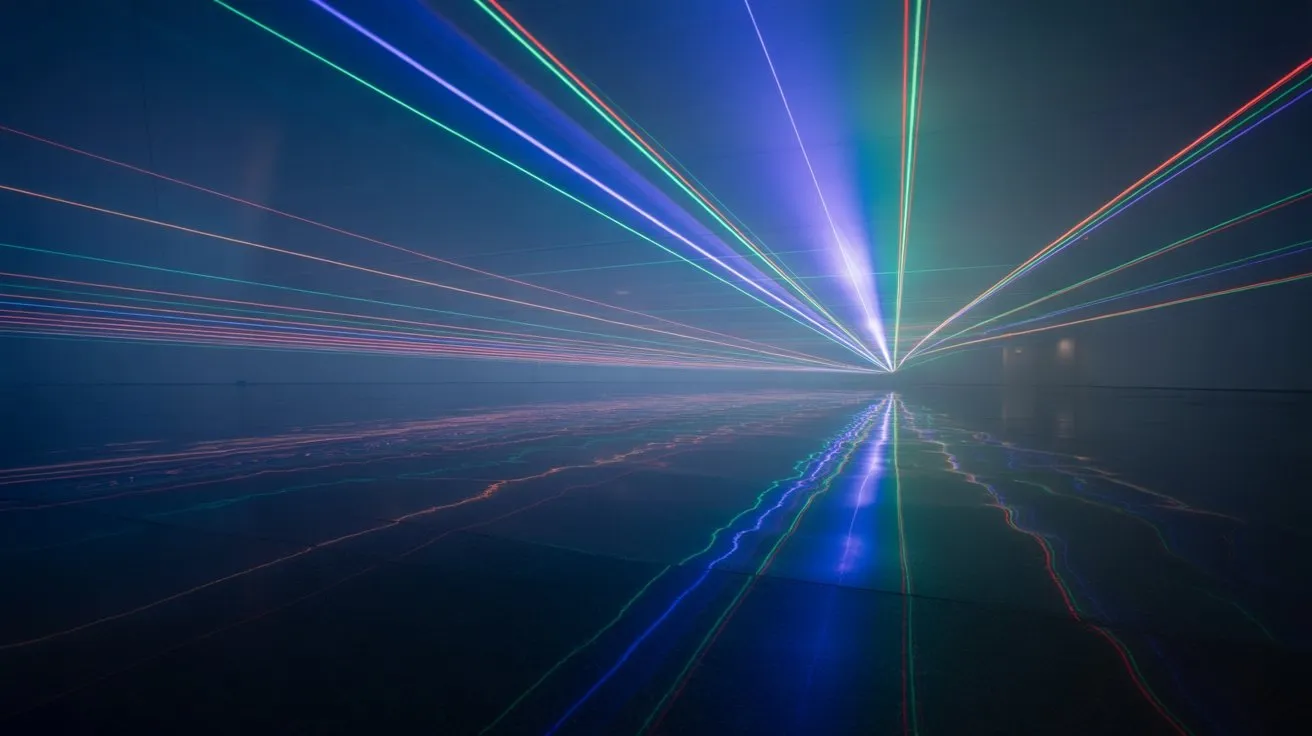
When planning a laser light show, you’ll need to take into account how laser beam physics interact with your room’s geometry to achieve perfect visibility and safety.
Beam divergence increases with distance, requiring minimum ceiling heights of 10-12 feet for proper dispersion patterns. Wall reflectance affects visibility—darker surfaces absorb light while lighter ones create unwanted reflections that can compromise safety protocols.
Your room’s length determines effective beam travel distance. Most consumer lasers need 15-20 feet minimum for pattern development, while professional units require 25-40 feet.
Width impacts scanning angles—narrow spaces limit horizontal sweeps and reduce visual impact. Always maintain 8-foot minimum audience clearance zones from direct beam paths.
Calculate cubic footage using length × width × height to guarantee adequate atmospheric particle suspension for maximum beam visibility without overcrowding.
Calculating Optimal Ceiling Height for Different Laser Types
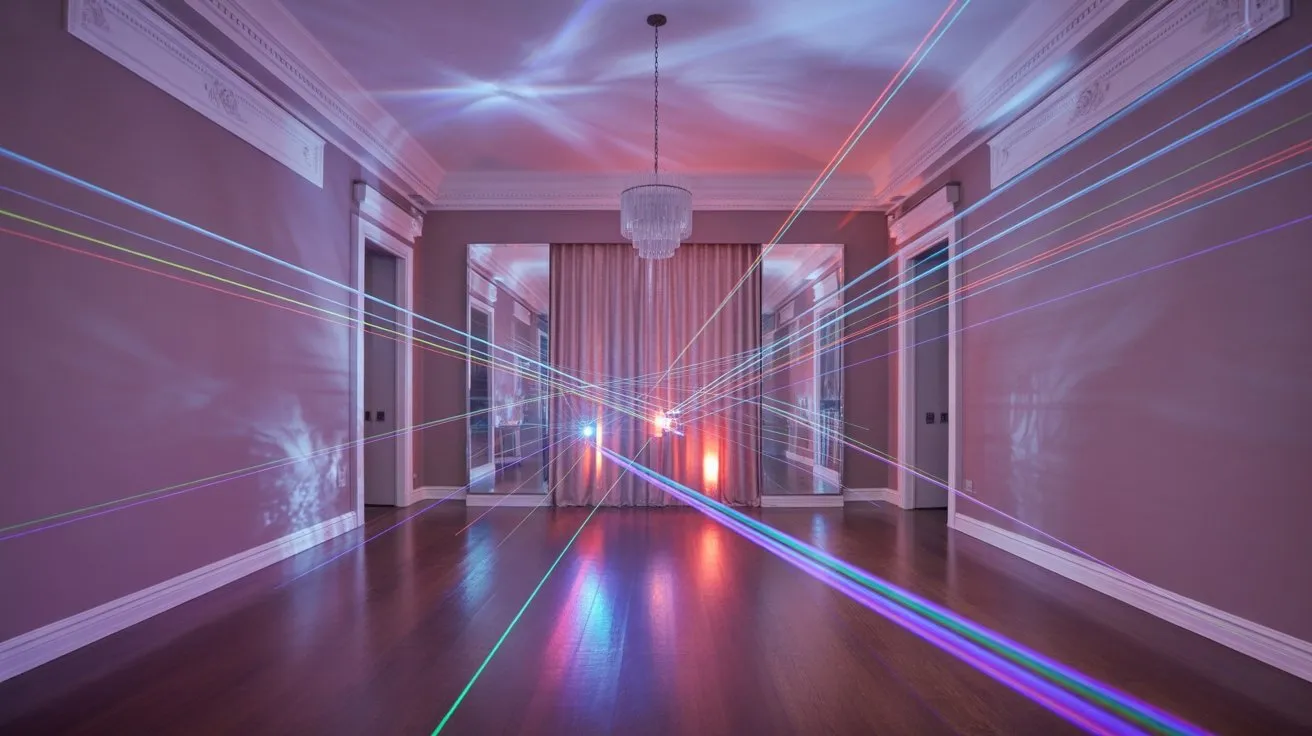
Building on the minimum 10-12 foot ceiling requirement, you’ll need to calculate precise height specifications based on your laser’s output power and beam characteristics.
Low-power lasers under 5mW require 12-14 feet for safe beam termination. Mid-range units (5-50mW) demand 15-18 feet to prevent dangerous reflections off ceiling surfaces. High-power systems exceeding 50mW necessitate 20+ feet for proper beam control.
Your laser’s divergence angle directly affects height calculations. Tight beam angles (1-5°) allow lower ceilings, while wide angles (10-20°) require additional clearance.
Factor in mounting height—ceiling-mounted projectors need 2-3 additional feet beyond beam termination distance. Wall-mounted units typically require 15-20% more vertical space.
Calculate your specific requirements using: ceiling height = beam termination distance + mounting offset + safety margin (minimum 2 feet).
Wall Colors and Surface Materials That Enhance Laser Visibility

While ceiling height guarantees safe beam termination, your wall colors and surface materials determine laser visibility and overall show quality. Dark walls absorb light, creating poor contrast that diminishes beam visibility.
You’ll achieve superb results with matte white or light gray walls that reflect laser light without creating hotspots.
Avoid glossy surfaces—they produce dangerous reflections and uneven beam distribution. Textured materials like acoustic foam enhance beam visibility by creating diffuse reflection patterns while improving sound quality.
Semi-gloss paint works for smaller rooms but requires careful positioning to prevent specular reflections toward audience areas.
For professional installations, consider removable fabric panels in neutral tones. They’re repositionable, provide excellent diffuse reflection, and accommodate different laser wavelengths effectively without compromising safety protocols.
Audience Capacity Guidelines for Safe Viewing Distances
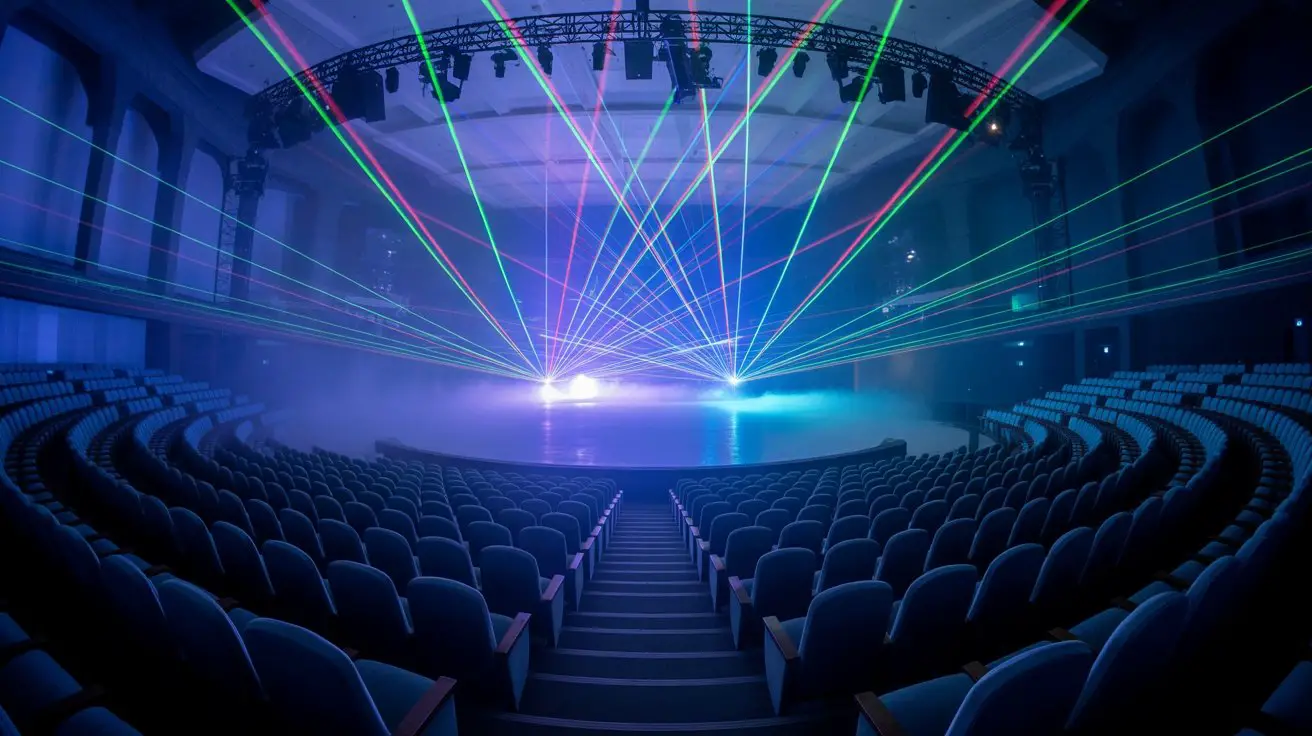
Optimized wall surfaces work hand-in-hand with proper audience positioning to create safe laser environments.
You’ll need to maintain minimum viewing distances based on laser classifications: Class 3B requires 10-15 feet, while Class 4 demands 20+ feet from projection sources.
Calculate audience capacity by dividing your room’s usable square footage by 6-8 square feet per person, accounting for these safety zones.
Position viewers perpendicular to beam paths, never in direct line with laser apertures.
Create designated viewing areas using floor tape or barriers to prevent audience migration into hazardous zones.
For rooms under 200 square feet, limit capacity to 15-20 people maximum.
Larger spaces exceeding 400 square feet can accommodate 40-50 viewers when properly configured with adequate emergency egress paths and clear sightlines to safety equipment.
Equipment Specifications That Determine Space Requirements
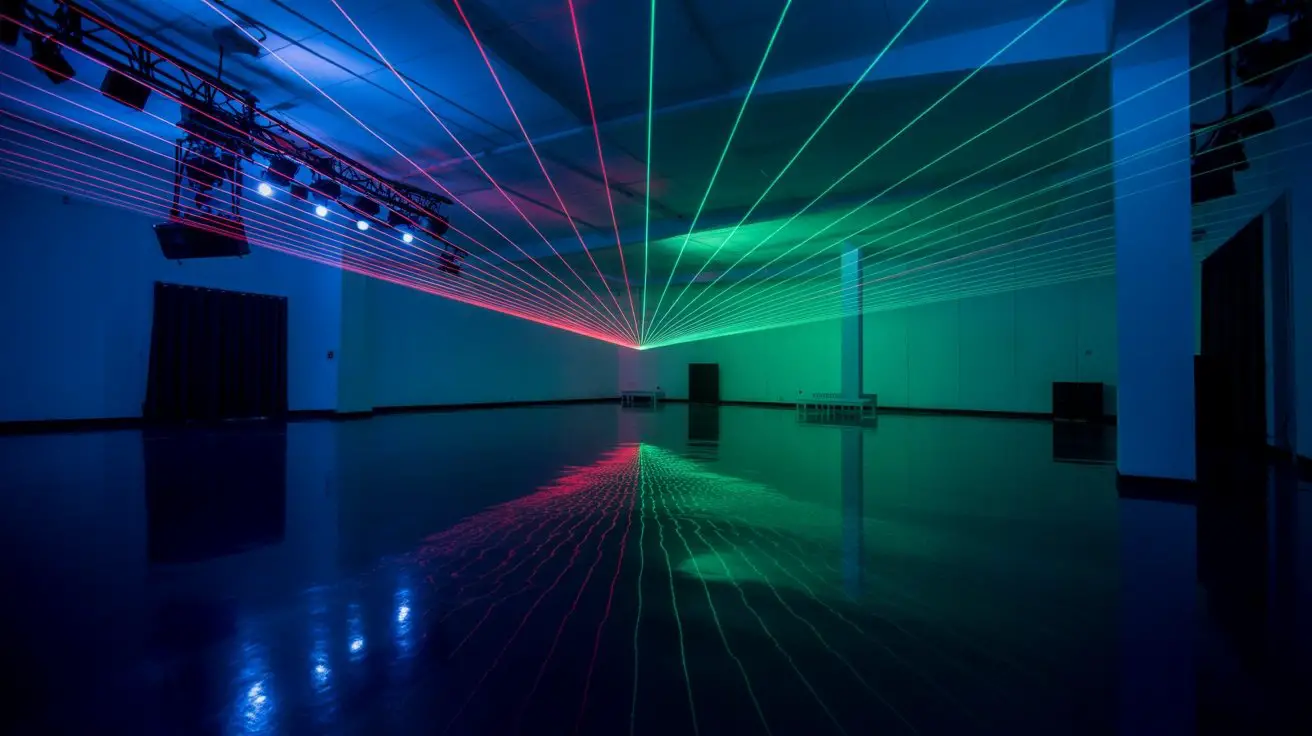
Since beam divergence and projection distance directly impact your space requirements, you’ll need to evaluate your laser system’s technical specifications before finalizing room dimensions.
Check your laser’s maximum throw distance – this determines your minimum room length. Beam width at projection distance affects required wall clearance and ceiling height.
Your laser’s power output influences safe viewing zones, requiring additional buffer space around audiences. Scanning angle specifications dictate horizontal and vertical coverage areas, directly affecting room width and height minimums.
Mirror galvanometer speed ratings determine ideal projection distances for clear image quality.
Consider fog machine placement requirements, electrical load specifications, and ventilation needs when calculating total space.
Document all equipment footprints, cable runs, and operator positioning requirements to guarantee adequate room capacity for safe, effective shows.
Room Layout Considerations for Maximum Visual Impact
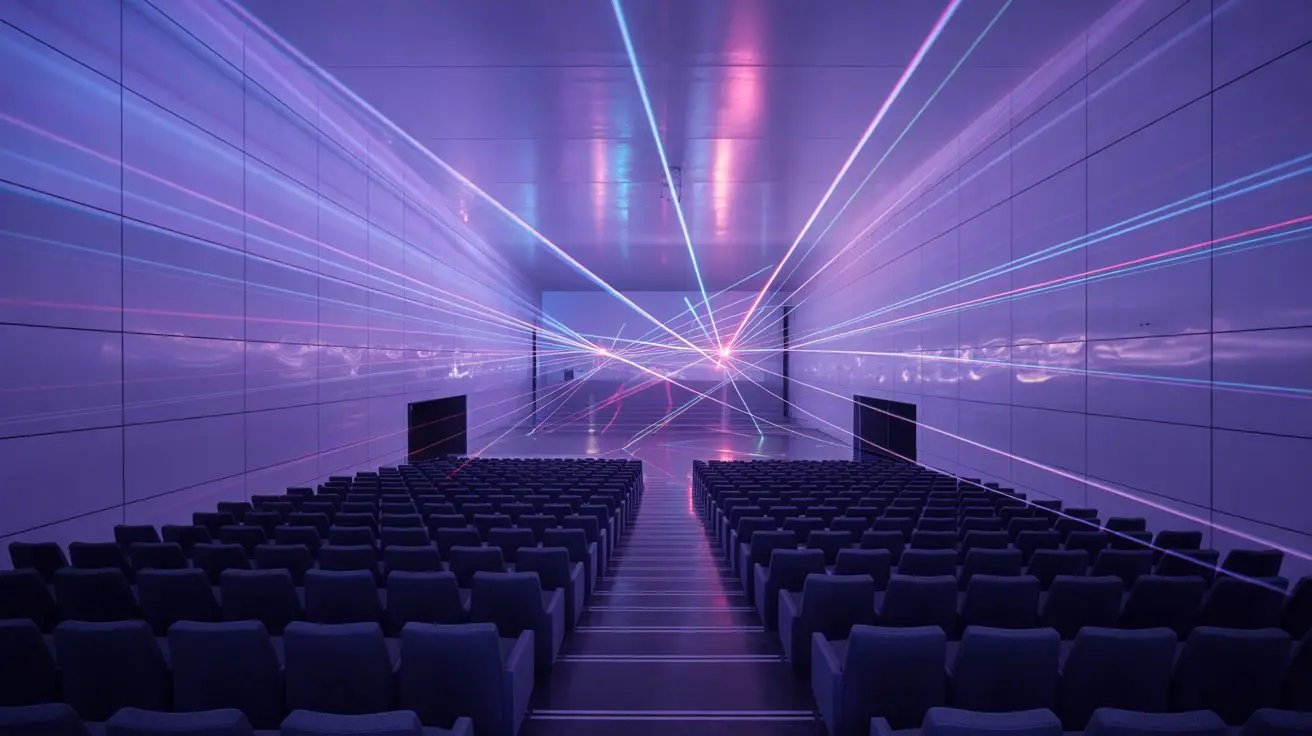
After you’ve determined your equipment specifications, strategic room layout becomes critical for delivering maximum visual impact while maintaining safety protocols.
Position your laser projector at ideal height—typically 8-10 feet—to create sweeping beam patterns without obstruction. Ascertain clear sight lines across the entire viewing area, removing furniture or fixtures that block projected beams.
Install projectors away from high-traffic zones to prevent accidental contact with laser paths. Consider ceiling height for vertical beam projection; 12-foot minimums allow dramatic overhead effects.
Place audience seating strategically to maximize viewing angles while maintaining safe distances from direct beam exposure. Dark-colored walls enhance beam visibility, while reflective surfaces should be positioned intentionally to create controlled bounce effects rather than dangerous reflections.
Frequently Asked Questions
What Permits or Licenses Are Required for Hosting Laser Light Shows?
You’ll need FDA variance permits for Class 3B/4 lasers, local entertainment licenses, fire department approvals, and potentially FAA coordination near airports. Check municipal noise ordinances and venue-specific requirements before operating any laser equipment.
How Much Does It Cost to Rent a Suitable Venue?
You can’t predict exact costs since venue rental varies dramatically by location and size. Expect $200-2,000 daily for suitable spaces with proper ceiling height, electrical capacity, and safety clearances required for laser operations.
What Insurance Coverage Is Needed for Laser Light Show Events?
You’ll need general liability insurance covering laser equipment damage, audience injury claims, and property damage. Professional indemnity protects against technical failures. Verify your policy includes laser-specific coverage since standard event insurance often excludes laser operations.
Are There Noise Restrictions That Could Affect the Show?
Sound waves can shatter your event dreams instantly. You’ll face strict decibel limits, typically 85-90dB in residential areas, 100-110dB commercially. Check local ordinances, measure ambient levels, and position speakers strategically to avoid complaints and potential shutdowns.
How Far in Advance Should I Book the Venue?
You’ll need 2-3 months minimum for proper venue booking. Popular spaces fill quickly, and you’ll require time to conduct site surveys, assess power requirements, evaluate ceiling heights, and coordinate safety inspections before your laser show.
Conclusion
You’ll balance artistic ambition against physical constraints when designing your laser show space. While you’re dreaming of expansive displays, you’re bound by ceiling heights and safety margins. Your powerful lasers demand towering rooms, yet your intimate gatherings thrive in compact spaces. You can’t ignore that soaring beams require soaring ceilings, but packed audiences need breathing room. You’re orchestrating light within limits—where creative vision meets calculated dimensions, spectacular shows emerge from precisely measured spaces.

